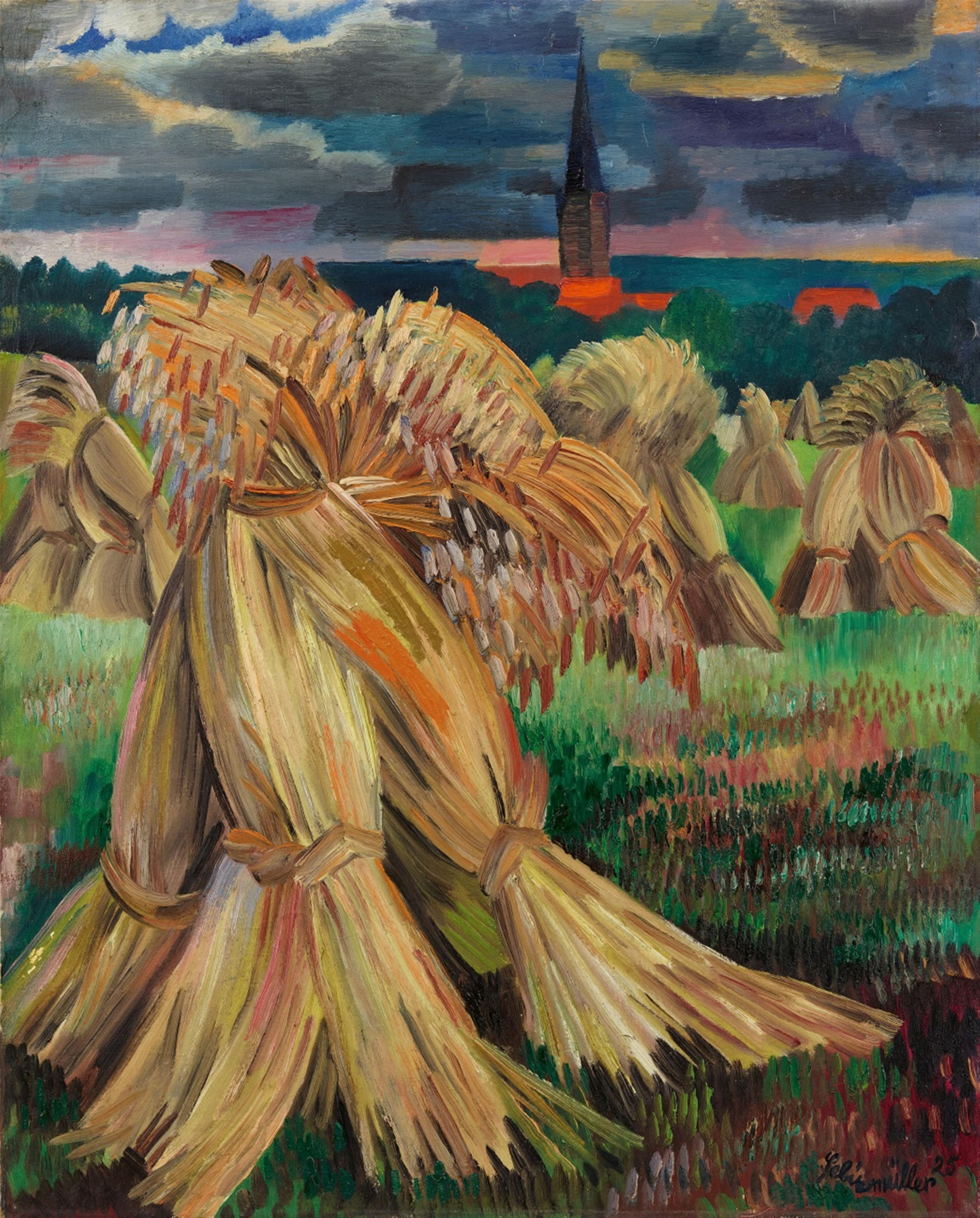Conrad Felixmüller
Kornpuppen in trüber Landschaft (Klotzsche)
1925
Oil on canvas 75 x 60.5 cm Framed. Signed and dated 'Felixmüller 25' in black lower right. Additionally signed, dated and inscribed 'C. Felixmüller/1925/No 355' verso on canvas. - Vibrant colours. Merely few minor losses of colour in the area of the shocks of corn up front.
“Klotzsche, situated magnificently between woods and fields, flowery gardens and sandy heaths …” - that is how euphorically Conrad Felixmüller spoke in 1928 about the focal point of his life at that time (cited in: Conrad Felixmüller, Werke und Dokumente, Nuremberg 1981, p. 110). For Felixmüller and his family, this tranquil village lying directly outside the limits of his native Dresden was simultaneously their home and refuge from 1918 to 1931. In those 12 years, the focus of the formerly political and revolutionary artist visibly shifted to private subjects. In his “seclusion from the world” (Felixmüller to Carl Sternheim, op. cit., p. 117), he primarily created portraits, but also landscapes featuring his immediate surroundings in the different seasons.
The characteristic shocks of corn in the freshly harvested fields exerted a particular fascination on Felixmüller, and he would paint them multiple times over the years. In our painting he has used elongated, forceful brushstrokes in golden yellow to invest the monumentalised bunches of hay with an almost anthropomorphic sense. In contrast to them, the ground in the field has been done with short, vertical strokes in luminous green and brown. A dramatic, late-summer sky with low-hanging rain clouds above the red roofs of Klotzsche provides the composition with additional energy.
“Kornpuppen in trüber Landschaft (Klotzsche)” is among Felixmüller's last decidedly expressive works. In the second half of the 1920s, his painting developed into a realism shaped by the New Objectivity, and he would retain this style until the end of his life.
Catalogue Raisonné
T. Felixmüller 355
Provenance
Acquired directly from the artist by the previous owner (mid 1970s); in North German family possession since
Exhibitions
Stuttgart 1925 (Kunsthaus L. Schaller), Conrad Felixmüller - Sonderausstellung, cat. no. 20; Wiesbaden 1926 (Nassauischer Kunstverein, Neues Museum), Conrad Felixmüller, cat. no. 16; Braunschweig 1927 (Haus der Gesellschaft der Freunde Junger Kunst), Conrad Felixmüller, cat. no. 17; Essen 1927 (Kunsthallen Hansahaus Essen), Conrad Felixmüller - Sonderausstellung, cat. no. 7 ("Dorf Klotzsche")

